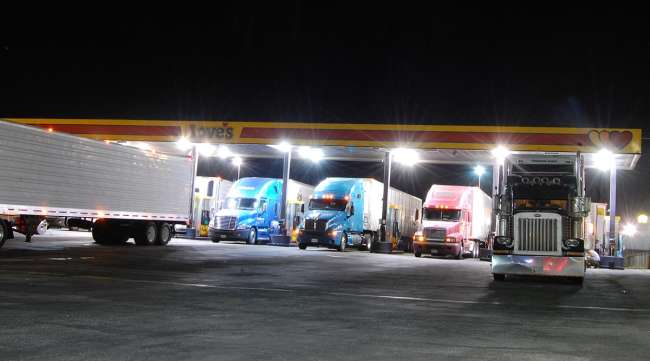Senior Reporter
Diesel Inches Up 0.2¢ to $2.903; Oil Nears $60 a Barrel

The U.S. average retail price of diesel inched up 0.2 cent to $2.903, as oil climbed over $59 a barrel to the highest level since June 2015 amid forecasts of tighter supplies.
Diesel costs 36.3 cents more than it did a year ago, when it was $2.540 a gallon, the Department of Energy said Dec. 26, reporting on the week beginning Dec. 25.
Average regional prices for trucking’s main fuel rose in six areas and fell in four others.
For the week beginning Dec. 25, the U.S. average price for regular gasoline rose 2.2 cents to $2.472 a gallon. It costs 16.3 cents more than it did a year ago, EIA said. Average gas prices decreased in six regions and rose in three others.
In 2018, EIA forecasts that U.S. regular gasoline retail prices will average $2.51 a gallon.
The increasingly tight U.S. distillate market — primarily ultra-low-sulfur diesel used in transportation and to a lesser degree as heating oil — make ULSD price increases more likely this winter if global demand for distillate remains high and if the United States experiences colder-than-normal temperatures on the East Coast, where heating oil is widely used for residential heating, EIA reported in its short-term energy outlook released in December.
At the same time, West Texas Intermediate crude oil is poised for a fourth straight monthly advance as the Organization of Petroleum Exporting Countries and its partners, including Russia, cut output and promise to continue doing so through the end of next year, according to Bloomberg News.
The weekly U.S. oil rig count was 747 during the week of Dec. 22, unchanged from the week before and 224 more than a year earlier, oil-field services company Baker Hughes Inc. reported.
Houston-based Baker Hughes ranks No. 15 on the Transport Topics Top 100 list of the largest private carriers in North America.
Meanwhile, West Texas Intermediate crude futures on the New York Mercantile Exchange closed at $59.97 on Dec. 26, compared with $57.16 on Dec. 18.
Despite the rising oil prices there is a shortage of truck drivers to service the oil fields, Bloomberg reported.
When the price of oil collapsed in 2014 and disrupted drilling operations across the massive Permian Basin shale formation in Texas, truckers were among those hardest hit. Rendered unnecessary by the slump in output, they were fired in scores, Bloomberg said.
Now, three years later, with oil prices inching higher and production in the Permian soaring once again, the drillers want the truckers back. The feeling, though, isn’t mutual. The pain of the 2014 bust remains fresh for many who went on to find driving gigs in other industries and, what’s more, they worry that companies will remain tightfisted with pay as they rehire.
About 3,000 oil truckers are hauling oil around the Permian, more than the 2,000 to 2,500 just before the 2014 price bust, Willie Taylor, CEO of the Permian Basin Workforce Board in Midland, Texas, told Bloomberg. But companies will need to hire more than 3,000 additional drivers at the rate the patch is growing, he said.




